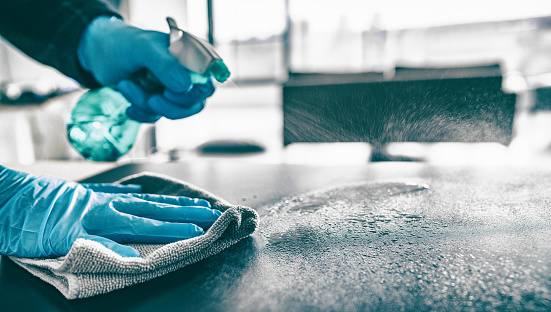Because of the coronavirus, information about disinfecting your home has been in the news more than ever before—and so have details about unsafe practices associated with cleaning products. In fact, the amount of information out there can be a bit overwhelming. So, to help, we’ll share highlights from a few key sources to provide you with a straightforward overview of safe ways to disinfect your home, along with practices to avoid.
Safe Practices
According to health experts at the Centers for Disease Control and Prevention (CDC), key steps to cleaning and disinfecting your home include:
- Wearing gloves, either reusable or disposable, when routinely cleaning and disinfecting surfaces; if you choose reusable gloves, mark a pair and always use that pair for COVID cleaning practices
- Using soap and water first, followed up by a disinfectant:
- The goal of using soap is to reduce the number of germs, impurities and dirt on surfaces, and this can be considered a pre-cleaning stage before disinfecting.
- The goal of using disinfectant is to kill germs.
- Frequently cleaning surfaces that are often touched in your home, including doorknobs, light switches, tables, counters, keyboards, phones, toilets, faucet handles, and so forth
- Washing your hands thoroughly after cleaning surfaces; here are hand sanitizers that the Food and Drug Administration (FDA) is warning people to avoid
Choose disinfectants that are registered by the Environmental Protection Agency (EPA) for household use. Here are ones recommended by the EPA to help prevent coronavirus spread; note that these are recommended for surface cleaning only, not for use on humans. Read and follow usage directions carefully and keep the surface being cleaned wet for the recommended period of time. Make sure the area is well ventilated before using the products and, besides protecting your hands, consider eye protection in case of splashing.
In general, the health experts say, use room temperature water, unless the product label directs otherwise. Never mix chemical products and store them out of reach of children and pets.
Disinfectant Misuse
In June 2020, AARP reported on new CDC data, noting how nearly 40% of Americans surveyed have “dangerously misused household cleaning products—including gargling with diluted bleach—to prevent transmission of the coronavirus.”
More specifically, participants have:
- Used bleach to rinse their fruit and vegetables: 19%
- Used household cleaning or disinfectant products to wash their hands or skin: 18%
- Used a cleaning or disinfectant spray to mist their bodies: 10%
- Inhaled household cleaning or disinfectant vapors: 6%
- Drank or gargled “diluted bleach solution, soapy water, and other cleaning and disinfectant solutions”: 4%
About a quarter of survey participants, when asked if they’d suffered an adverse effect on their health through one of these practices, said “yes.”
The CDC decided to commission this study after accidental poisonings involving household cleaners were increasing, with poison control centers reporting a sharp increase in calls. In fact, issues associated with cleaning and disinfectant products were 20% higher than the previous year.










